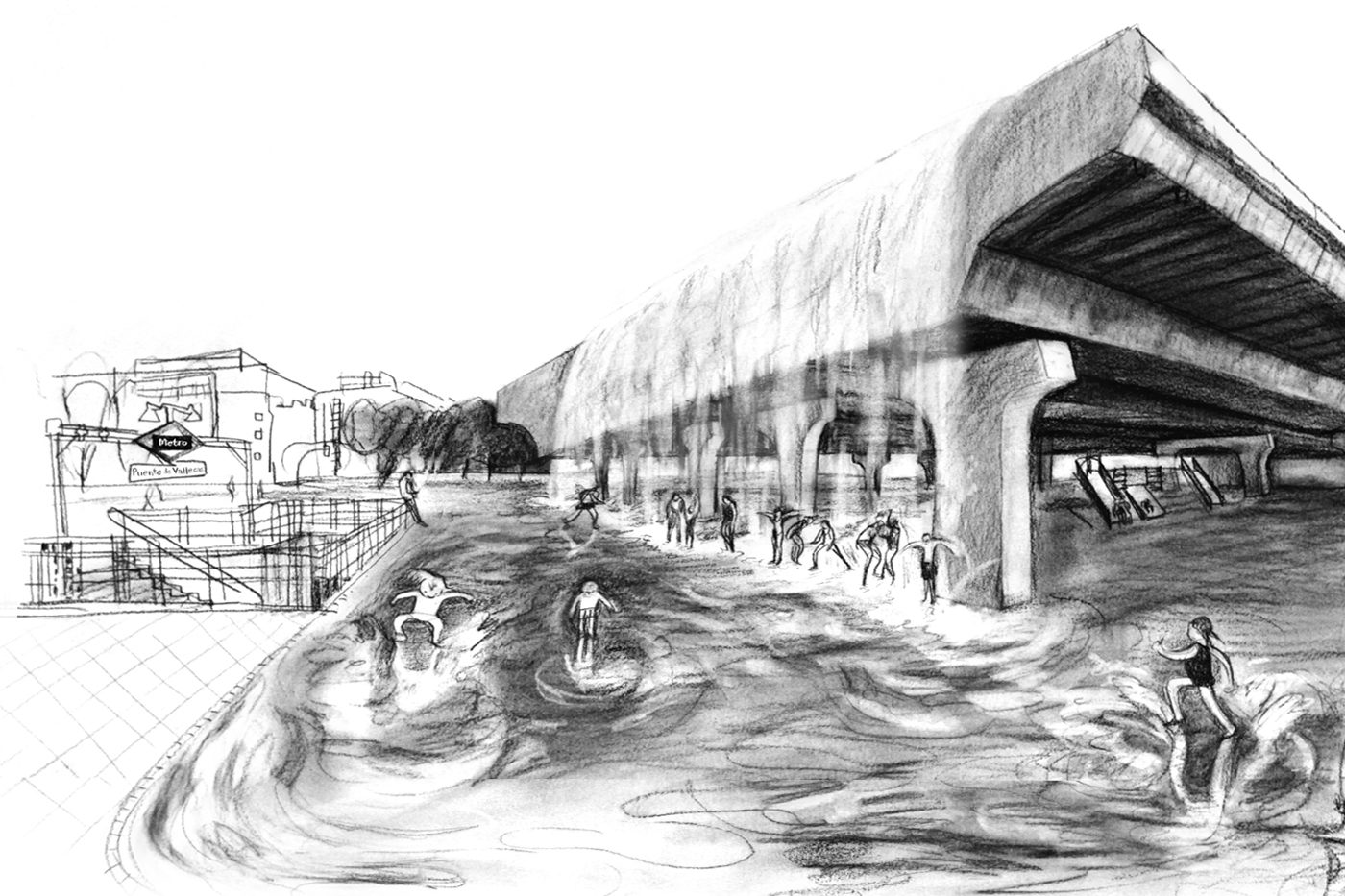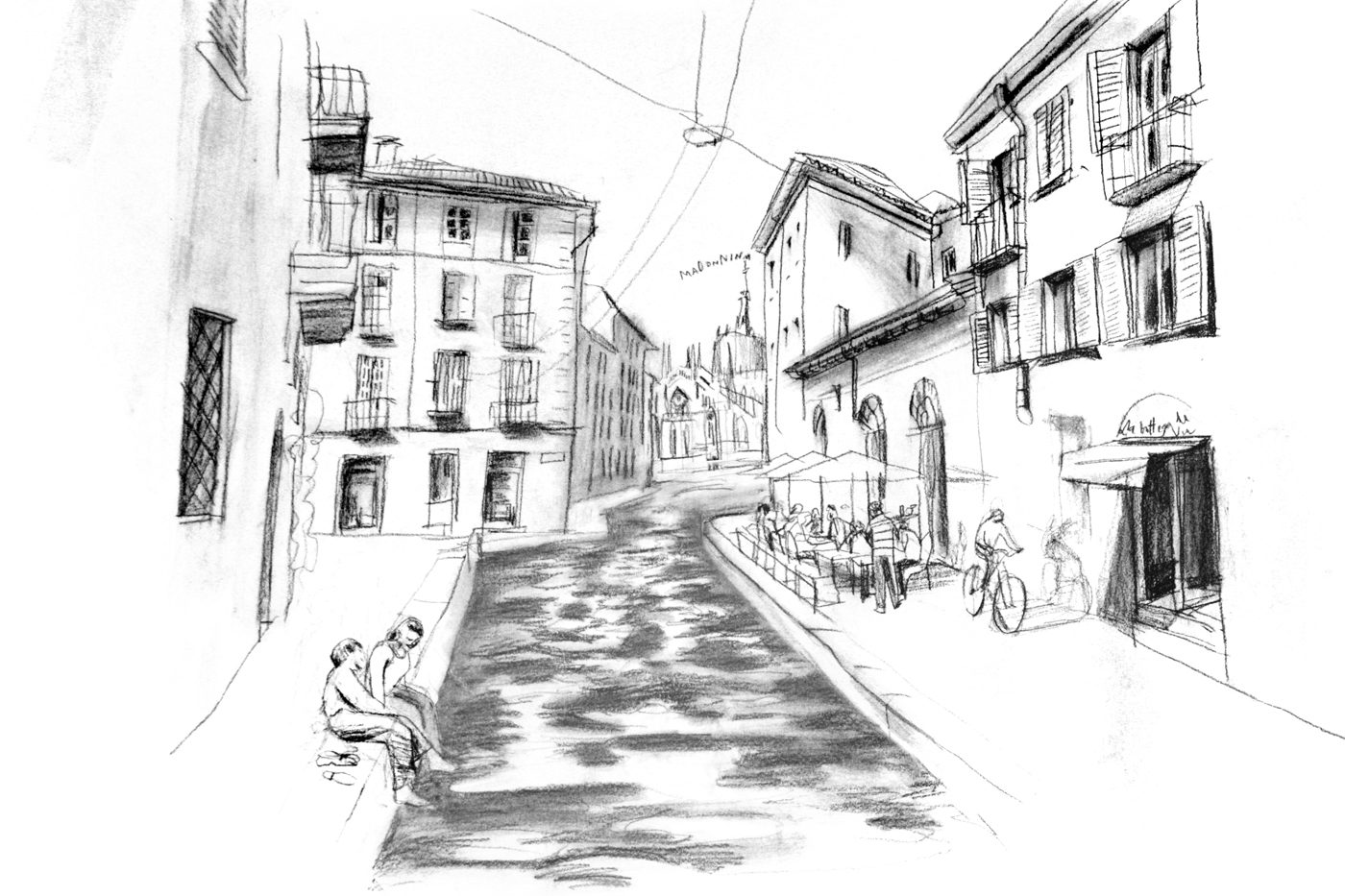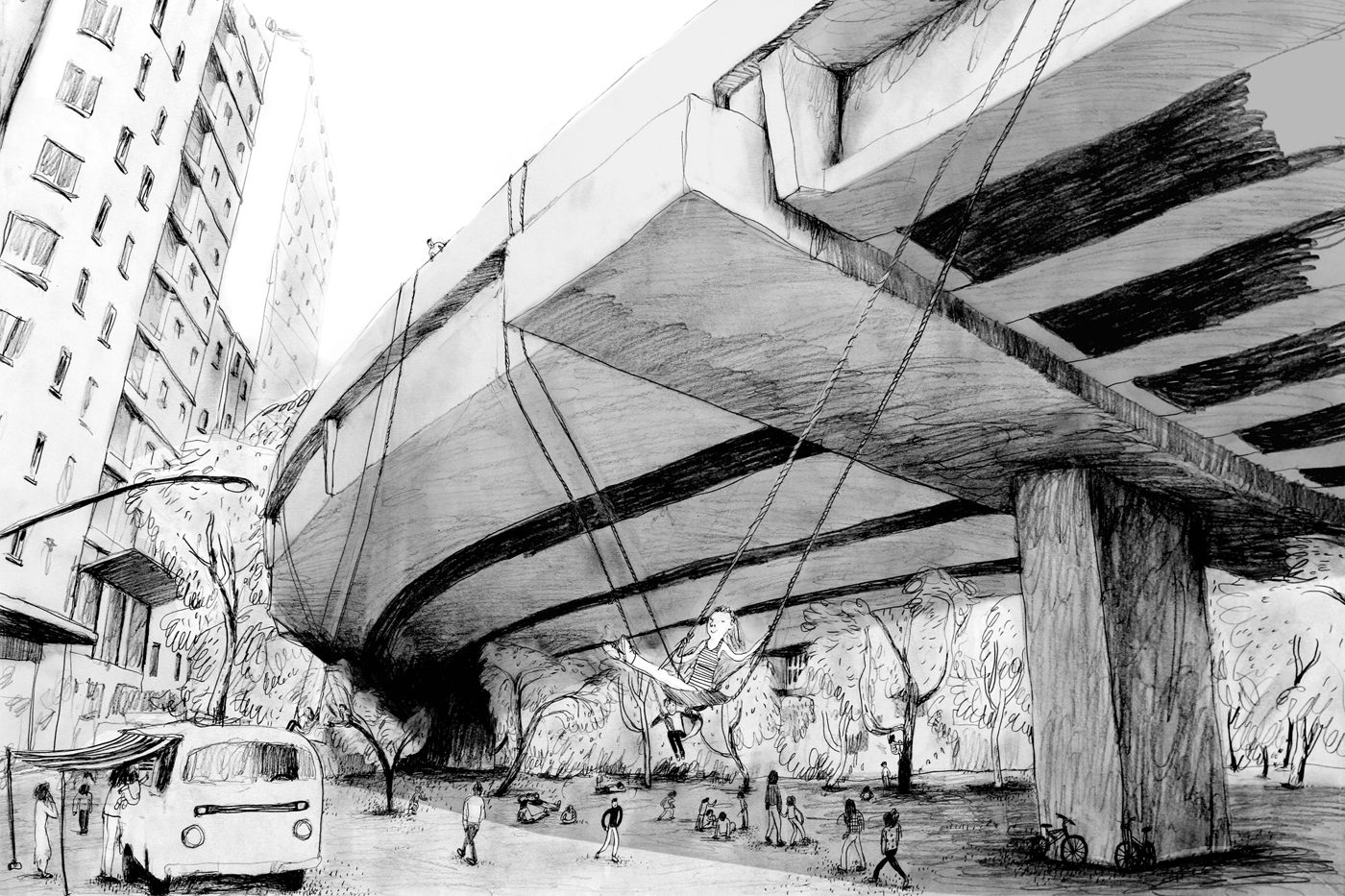Project implementation: Spain, Italy, Brazil
Project development: Spain, Brazil
This work is a collage-like journey through several cities without many apparent similarities, but connected by a common perspective that highlights aspects intimately linked to the environment, such as vegetation, its relationship with water, and the climate. The approach is neither technical nor academic, but rather phenomenological: when faced with stimuli such as heat, poetic solutions are proposed, sometimes looking to the past for answers, attempting to seduce the viewer, inviting them to forget prejudices, unlock their imagination, and connect with their physical well-being.
This line of work, which began years ago in Madrid, was developed in depth in the "Fantastic Guide to São Paulo," a faux illustrated tourist guide published in 2015 that blends reality and fiction. If the tourist guide is a narrative for mass consumption of the contemporary city, this project builds on that idea and proposes to normalize a utopian narrative, presenting surprising situations to the reader as if they were everyday, connecting cities where the author has lived, connecting problems that seem local but are global.
The drawings on display serve as sketches to draw attention to the Biennial's thematic axes. To "Preserve forests and reforest cities," it is necessary to ensure optimal conditions for the survival of bumblebees, thrushes, and other pollinators, which involves caring for existing vegetation. Although the presence of water was decisive for the founding of cities, in their development we have forgotten its importance. We cannot "Coexist with water" without knowing it exists, so a map of each city is displayed, with its waterways and infrastructure developed and then buried and forgotten. "Renovate more and build green" implies preserving the architectural heritage of historically valuable popular buildings such as Neomudejar or transforming interior courtyards into water gardens for cooling off in the summer to "Ensure climate justice." But it also involves transforming the Minhocão (Minhocão) or the Puente de Vallecas (Vallecas Bridge). Both are very similar examples of large-scale infrastructure projects designed for cars in the 1970s that act as physical boundaries, accentuate inequality between neighborhoods, and whose associated problems have mobilized the neighborhood for years. Instead of opting for total demolition, the project presents modifications with the aim of redefining them, valuing the enormous material resources invested in their construction, but also their symbolic power as a monument to the past adapted to the needs of the future.
The drawings have been adapted to the exhibition format of this Biennial and will be part of the publication São Paulo and other Fantastic Cities, published by Lote42 and released at the end of 2025.




